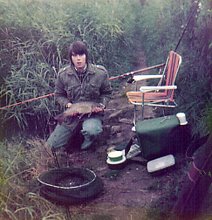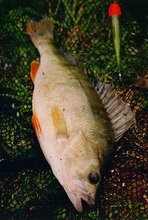 |
| Homemade bread and homemade marmalade.... |
It's that time again - Marmalade Month! The sour Seville oranges have a short season and this is it - Top Tip - make sure you make enough to last all year. Your friends and family will love you and you will enjoy it all year round....
I'm currently working my way through a jar that my Son In Law Phil has made - and it's delicious. It's most certainly worth the little bit of effort that is involved, but it is quite a simple recipe....
Firstly, set aside a few hours...you'll need it to do it properly, but you'll have Marmalade for a year, so it's worth it. By the way, for 2 1/2 hours or so the oranges will be cooking gently, bubbling away on their own without much attention required from you so it isn't as onerous as it sounds anyway.
Secondly it's decision time: Marmalade with or without a hit of ginger....If anything in the world likes a little touch of ginger warmth it's Marmalade...perhaps you should try both....
So, here are the ingredients:
1 kilo of Seville oranges, scrubbed and with the little green stars taken off.
1 lemon - it's the juice you need
2 kilos of granulated sugar
2 1/2 litres of water
OR
Replace 250 grams of sugar with 250 grams of stem ginger and the sugar syrup....
Now take a large pot or a jam pan and bring the water to the boil with the oranges in, then reduce it to a simmer and cook for two and a half hours or until the oranges can be easily pierced with a blunt knife, they should be wonderfully soft and your kitchen should have a warm, citrus tang to the air making you think of Christmas, breakfast and holidays in the sun all at the same time. It's a fantastic essence....
1 kilo of Seville oranges, scrubbed and with the little green stars taken off.
1 lemon - it's the juice you need
2 kilos of granulated sugar
2 1/2 litres of water
OR
Replace 250 grams of sugar with 250 grams of stem ginger and the sugar syrup....
OK, that done it now gets a little more involved, but it is still straight forward....
First, put a plate or a saucer in the freezer!
I will explain, I promise....
Then, put your washed jars in the oven set at 100 as detailed HERE
Take the whole oranges from the liquor, you should have 1.7 litres or so left. If not top it up or reduce it as required.
Put a marigold glove on your left hand if right handed (Trust me, I have asbestos hands and I need it) split the oranges over a bowl with a blunt knife removing all the insides, but especially the pips and place the skins in another bowl. When all the innards are dealt with, use a sieve to extract ALL the juice into your liquor together with the juice of the lemon and the sliced stem ginger and syrup if using...Put the sugar in and stir until dissolved. Turn up the heat to a boil.
Meanwhile take about half the orange skins and cut them CAREFULLY, (nothing like a fingernail in your marmalade to put you off it for some time...) skin side up, as thinly or thickly as you like it. Add these to the pot as well.
Now you're going to boil the whole lot for between 15 and 30 minutes (depending on your pan, the amount of liquid, the oranges themselves and the heat of your hob) until setting point is reached. But keep your eye on it it can turn very quickly - you're trying to reach a temperature of over 100 degrees to set the jam.
SETTING POINT
Take out the dish from the freezer and drop some liquid from the pot onto it. Push the liquid with your finger. If it wrinkles, setting point is reached and you can remove the pan from the heat.
You will get some notice; the liquid becomes gloopier, thicker and has a different smell, but keep your eyes on it, it can catch quickly and burn on the bottom of the pan, spoiling the taste. If not reached boil for a few more minutes and test again.
Once setting point is achieved, remove the pan from the heat and allow to cool down for 10 - 15 minutes. This is to allow the peel to be evenly distributed throughout the mix. If not allowed to cool it will all float to the top of the jars - aesthetically unpleasing...
Jar it up and seal the jars as detailed previously HERE.
A few notes:
- You can add all the pith, ensuring all the pips are out, this makes a more 'jammy' marmalade. My view is that it also removes some of the clarity and colour, and the pith that was clinging to the peel was added to the mix anyway - your choice.
- Check out SETTING POINTS on the Internet if you're unsure - practice makes perfect though...or buy a GOOD BOOK
- You can also use another method whereby you slice the pith and skin before it's cooked and leave all the peel and pith to soak in the water overnight. You then have to boil the mixture to reduce it all by one third then add the sugar, lemon and boil to setting point, they're both good - I just prefer the whole fruit method.
- If you have scum on the top of your marmalade after setting point is reached and before you have jarred it, add a 25g lump of butter and stir it in gently, this should get rid of it.
The reason Seville oranges are so good is that they have an acidity, a sourness that works so well with the sugar and the ginger. Of course, Marmalade can be made with any of the citrus fruits and also with onions, but, for me, January and the arrival of Seville oranges is traditionally the time I make marmalade. I hope you'll give it a go too.
















